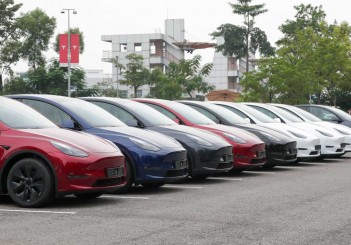TOYOTA CITY: Toyota, official partner of Energy Observer and an avid supporter of their project from the start, announces that it has developed a fuel cell system for maritime applications, with its first delivery destined for Energy Observer.
Former racing catamaran turned ship of the future, Energy Observer has made waves as it has been navigating its six-year odyssey around the world as the first energy-autonomous hydrogen vessel.
Embarking in June 2017 from Saint- Malo Port in France, Energy Observer is an electrically propelled vessel of the future that is operated using a mix of renewable energies and an on-board system that produces carbon-free hydrogen from seawater.
The operators of the vessel are on a mission to go and meet people in 50 countries and 101 ports during their voyage who are designing the future, with an aim to prove that a cleaner world is not only possible, but that the innovations can open some doors to a new economic expansion.
Their activities also demonstrate and share potential solutions to champion an ecological and energy transition, as well as support tomorrow's energy networks as they encourage providers to make the networks more efficient and applicable on a large scale.
Previously, Toyota's fuel cell system, which was first introduced in the Toyota Mirai, the world's first mass-produced hydrogen fuel cell electric vehicle, proved its value as a propulsion system for automobiles. However, the company has more recently been exploring the use of its fuel cell system in other applications such as buses and trucks.
Toyota, a company aiming to develop a hydrogen society based on its challenge to "Establish a future society in Harmony with Nature" as stated in its Environmental Challenge 2050, was able to align with Energy Observer's mission and activities.
From that common ground, the two have worked closely together on how a hydrogen fuel cell system could be adapted to martime applications, which eventually led to the introduction of Toyota's maritime fuel cell technology and system.
The maritime-specific fuel cell system was developed by Toyota Technical Center Europe in a mere seven months. It required a re-design of the system, followed by the build and installation of the compact fuel cell module.
This was accomplished using components first introduced in the Toyota Mirai which were fitted into a more compact module suitable for marine applications. The project successfully demonstrates the adaptability of the Toyota fuel cell technology to a variety of applications, including those outside of land-based vehicles.










